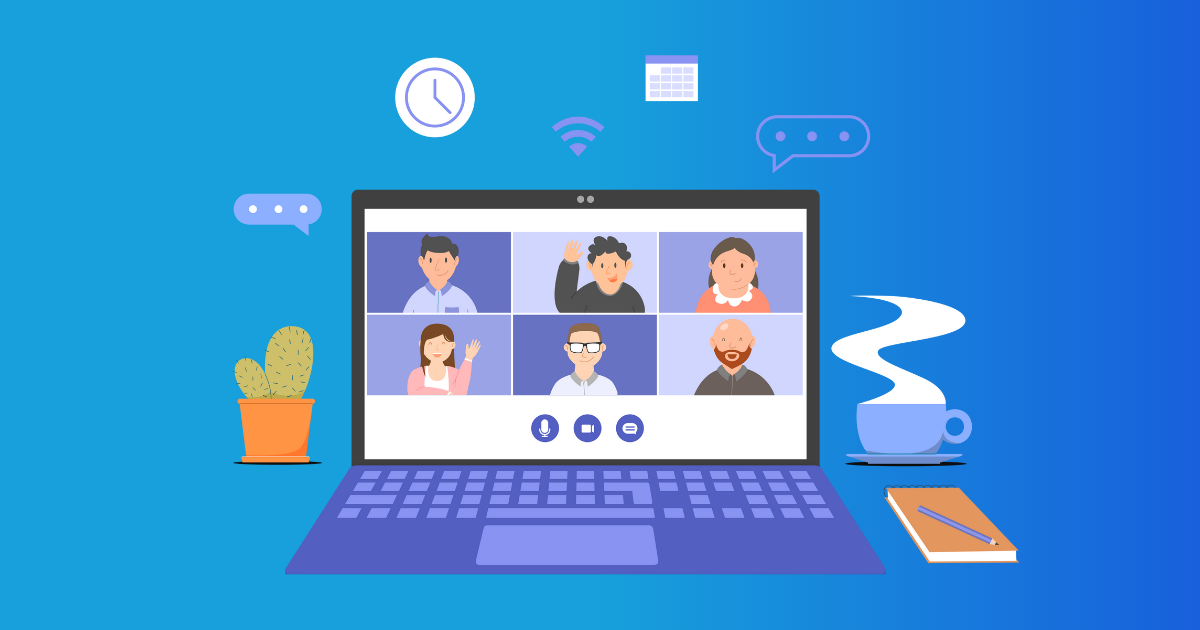Table of Contents
- Understanding Mobile Video Conferencing with Jitsi
- Real-World Experience: What Users Face
- Setting Up Jitsi on Android and iOS for Optimal Performance
- Installing Jitsi Meet on Mobile Devices
- Step-by-Step Guide to Jitsi Android iOS Setup
- Jitsi Mobile Optimization: Improving User Experience
- Minimize Background Data Usage
- Simplify Navigation
- Reduce CPU and Battery Drain
- Customize UI Themes
- Case Study: UX Improvements Lead to Higher Adoption
- Troubleshooting Common Mobile Video Conferencing Issues on Jitsi
- Poor Video or Audio Quality
- App Crashes or Freezing
- Screen Sharing Problems
- Security and Privacy Considerations for Mobile Jitsi Users
- Advanced Tips: Tools and Integrations for Enhanced Mobile Jitsi Usage
- Summary
- Conclusion
You know, mobile video conferencing isn’t just a neat feature anymore—it’s a must-have as more of us hit the remote work trail. And Jitsi? Well, it’s the go-to for a lot of folks who crave an open-source platform that respects your privacy. But here’s the kicker: when you’re dialing in from your phone, things can go sideways—think glitchy calls and so-so usability. This guide is all about squaring those circles, making sure your Jitsi experience on Android or iOS is top-notch.
Understanding Mobile Video Conferencing with Jitsi
So, what’s the deal with using Jitsi on your phone? It’s mostly about juggling a bunch of moving parts. Unlike your trusty laptop, mobile screens are tinier, and let’s be real, they’re not exactly powerhouses. Plus, mobile networks can be as reliable as my grandma’s old radio. Jitsi’s got your back with WebRTC for seamless real-time chats, but if you’ve tried their apps, you might notice a few hiccups—like audio taking its sweet time to catch up.
Real-World Experience: What Users Face
I was knee-deep in a project recently, using Jitsi for team chats on the go. The feedback? Turns out, folks were wrestling with frozen screens and sound dropouts way too often, all thanks to poor bandwidth and overheating devices. Pro tip: tweak the video resolution and make the app go easy on your device to wave bye-bye to these irritations.
Setting Up Jitsi on Android and iOS for Optimal Performance
Getting Jitsi working smoothly on your phone is a bit like setting the stage—everything’s gotta be just right.
Installing Jitsi Meet on Mobile Devices
- Android users: Snag Jitsi Meet on the Google Play Store. It won’t cost you a dime, and you’ll get those sweet updates.
- iOS users: Apple App Store has your Jitsi Meet ticket. Made just for your iPhone or iPad.
Step-by-Step Guide to Jitsi Android iOS Setup
- Roll Out the Welcome Mat: Give permissions for your mic, camera, and notifications, or no dice for video chats.
- Stay Current: Keep an eye on those updates. The newer versions fix bugs and keep things stable.
- Tweak the Video Settings:
- Dial down the resolution to 360p or 180p on shaky networks.
- Lower quality means your call won’t hiccup like my uncle’s old slideshow.
- Nail the Audio:
- With noise suppression and echo cancellation, you’re not just hearing echoes of yourself.
- When you’re not talking, hit mute to save on bandwidth.
- Rock “Call Quality Stats” (if you got it) to keep tabs on your network mojo in the app.
These steps help mold Jitsi to fit your gadget’s quirks and your network’s mood swings.
Jitsi Mobile Optimization: Improving User Experience
Want Jitsi to feel more like a high-five than homework? Here’s how:
Minimize Background Data Usage
- No need for the video spotlight right away. Start without it to save data, and flip it on later when the network’s cooperating.
- For tough times, switch to “Audio Only.”
Simplify Navigation
- Keep vital tools like mute and chat within thumb’s reach. Too many icons is like trying to find a needle in a haystack.
- Gesture controls? Yes, please! Swiping to mute sounds rad.
Reduce CPU and Battery Drain
Phones lack the oomph of laptops. Make life easy for Jitsi on mobile:
- Keep HD video on standby. Go low-res unless you’re showing off.
- Shut down extra apps eating away at battery and CPU.
- Use Jitsi’s bandwidth wizardry for smooth sailing.
Customize UI Themes
Jitsi’s custom themes can turn your UI from “meh” to “nifty.” Go for big text, and themes with good contrast—great for when you’re outside or in dim spaces.
Case Study: UX Improvements Lead to Higher Adoption
Some school turned their video classes on a dime by switching to a Jitsi look made for phones. Attendance shot up by 30%—that’s a lot of students deciding to show up.
Troubleshooting Common Mobile Video Conferencing Issues on Jitsi
Even the best laid plans go off track. Here’s how to tackle typical problems:
Poor Video or Audio Quality
- Check if your network is sleepy with apps like Speedtest—you want at least 1 Mbps for this to work well.
- Switch from Wi-Fi to cellular to see which wins.
- Just dial back that video quality.
- Give your phone a fresh start.
App Crashes or Freezing
- Clear out the app cache or reinstall Jitsi Meet.
- Shut down memory-hogging apps.
- Look out for software updates.
Screen Sharing Problems
- Ensure your phone can share screens—and has permission to do so.
- Use Jitsi’s native apps, not browsers, for fewer compatibility headaches.
Security and Privacy Considerations for Mobile Jitsi Users
It’s a jungle out there in the video call world. Jitsi’s got great encryption, but here’s how to stay out of trouble:
- Only download from the official stores.
- Update that app to keep loopholes patched up.
- Use encrypted meetings whenever possible. Jitsi does this, but you gotta switch it on.
- Steer clear of public Wi-Fi without a VPN.
- Keep meeting links off social media unless you like surprise guests.
Advanced Tips: Tools and Integrations for Enhanced Mobile Jitsi Usage
Want to take it up a notch? Try these:
- Bandwidth Control Tools: Use something like NetLimiter on Android to babysit your data.
- External Microphones & Headsets: Make sure audio isn’t just noise.
- Battery Saver Modes: Keep your calls going by optimizing battery during use.
- Screen Recording Apps: Handy for keeping meeting records, but double-check the legal side of things.
- Third-party Integrations: Yes to bots and plugins like calendar reminders that work like a charm on mobile.
Summary
To make Jitsi on your phone not just work, but work well, get familiar with your device and network. Nail the basics, tweak stuff for the real world, and don’t skimp on security. Testing out different settings might feel like calibrating a Mars rover, but it pays off in clearer, happier video calls.
Conclusion
Getting Jitsi to run smoothly on mobile isn’t magic—it’s all about getting those settings just right. Configuring your app, sorting out video and audio to match your network, and jazzing up the UX can transform those mobile calls into something you enjoy. Always keep your app updated and follow sound security tips to keep your meetings safe.
Give these tips a spin in your next call. Curious about more? The Jitsi community or a savvy tech friend are great go-tos for extra help.
Author Bio:
Avkash Kakdiya is a technology content writer and IT consultant specializing in open-source collaboration tools and remote communication platforms. With hands-on experience deploying video conferencing solutions across multiple industries, Avkash helps users maximize technology for clear and effective digital communication.
References:
- Official Jitsi Meet Documentation – https://jitsi.org/jitsi-meet
- WebRTC Bandwidth Guidelines – https://webrtc.org/start/your-first-call#getting-media
- Android & iOS App Optimization Tips – official store developer pages
- Real-world performance tests by Stream PLA – https://streampla.com/blog/video-call-benchmarks
FAQ
Mobile video conferencing with Jitsi refers to using Jitsi's platform on smartphones and tablets to host or join video calls.
You can optimize Jitsi on mobile by managing bandwidth, adjusting video quality, using native apps, and applying recommended UX practices.
Yes, Jitsi has dedicated apps for both Android and iOS, allowing seamless video conferencing on these platforms.
Network stability, device processing power, screen size, and app design all affect the user experience of Jitsi on mobile.
Jitsi uses end-to-end encryption for secure video calls, but users should keep apps updated and use trusted networks.


